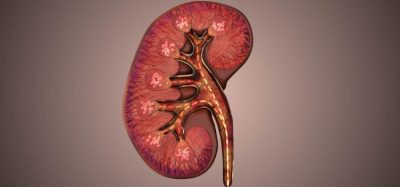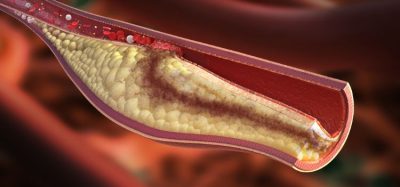Roundtable: The future direction for clinical trials
Posted: 21 September 2007 | European Pharmaceutical Review | No comments yet
Sally Burtles, Stephen Freestone and Eddie Caffrey discuss the future direction for clinical trials, covering the main challenges faced in the current application of Phase I clinical trials, changes the industry be implementing in order to further improve the efficiency of early clinical trials and how the Regulatory bodies’ guidance on safe dosages affects First-In-Man trials.


Question 1: What are the main challenges faced in the current application of Phase I clinical trials?
Burtles: Success rates for the development of new drugs is very low across all therapeutic areas and is lowest for oncology with only five per cent of compounds going into Phase I making it to market1. It is therefore important for Phase I and II trials to be better at distinguishing those agents that are going to succeed and those that are not. Costs of new drugs are growing and it is important to be able to focus resources on those that are most likely to make it all the way.
As the understanding of the human genome and the molecular pathogenesis of cancer develop and our knowledge of which patients respond to each treatment increases, the possibility of personalised medicine is now emerging. The concept of undertaking a genomic analysis of a patient’s tumour and using that to determine a precise combination of drugs to eliminate tumours with that particular set of genetic defects, is now conceivable and could start to become a reality within one or two decades. The practicalities of developing treatments for such small populations/individuals however, are clearly enormous.
The events last year at Northwick Park Hospital and the TeGenero trial has made it more challenging to make the jump from preclinical to clinical development and tighter regulatory hurdles to jump.
Freestone: I believe the main challenge relates to ensuring the safety of the trial participants. Phase I trials in particular should be extremely low risk and the safety of trial participants is always the main priority. While risk can never be eliminated there are many factors that can reduce the risk including a thorough review of the preclinical data, considering the mode of action and target(s) of the IMP, careful selection of the study population, and optimal study design with appropriate starting doses and intervals between doses. Criteria for dose escalation should be clearly defined in the protocol and finally, appropriately qualified and experienced staff conducting the trials in suitable facilities with access to all necessary equipment and emergency drugs should ensure that risk is minimised for the participating subjects.
Caffrey: In the UK there has been a period of uncertainty in the Phase I arena following the introduction of the revised Medicines and Healthcare products Regulatory Agency (MHRA) in February this year. However now that the guidelines are finalised and operational, I believe that it is good news for early-phase clinical research in the UK, explained Eddie Caffrey, Vice President, Phase I Research, Quintiles Transnational. I think the MHRA developed an excellent process whereby companies, with higher risk compounds, have access to expert advice on trial elements such as dosing and protocol design very early on in their drug development timeline. I think perhaps there were some concerns during the interim period that there would be delays in the approval process but this has not be realised.
Question 2: What changes will the industry be implementing in order to further improve the efficiency of early clinical trials?
Burtles: In the last few years there has been a development, led by the National Cancer Institute and the FDA in the USA to allow reduced preclinical data to be used to get approval to take new drugs into man and to undertake what are called Phase 0 trials. These are single dose trials and may involve micro-doses (100-1000 times smaller than the expected therapeutic dose) or doses that have a pharmacological effect. These studies, it is suggested, could be used to identify the best agent from a series based on their pharmacological properties in humans. Such a scheme does not currently exist in Europe, but it is an interesting approach to speeding the transition into patients.
A major thrust in the development of new treatments for cancer is the development of biomarkers and other techniques for assessing the effects of new drugs. These will demonstrate whether a drug is acting by its proposed mechanism, may identify which patients will respond or may be a surrogate for clinical activity. Functional imaging techniques, such as MRI and PET are also helping enhance our early understanding of the drug being developed.
Clearly the “–omics” technologies also have potential to improve the efficiency of early clinical trials. These are not yet advanced enough in their development to see exactly how this will work, but it is certainly an area of intense interest and activity from the industry.
Freestone: In theory, better candidate selection via the use of new technologies should improve efficiency. Examples include in vitro metabolism, and the comparison of human cells with those of relevant animal species used in pharmacology and toxicology experiments to predict potential toxicities, and pharmacokinetic and pharmacodynamic issues. Other examples include the use of better animal models to predict efficacy and the utilisation of new biomarkers which may be predictive for human diseases and their treatment.
Better study design may improve the efficiency of early clinical development. Examples include the enrollment in Phase I clinical pharmacology studies of elderly volunteers which may be more representative of the patient population and who may be more sensitive to potential toxicities which can be identified safely in a controlled environment. The use of biomarkers or surrogate endpoints of efficacy may be used at an early stage to identify proof of principle in advance of formal Phase II studies. Examples include the use of challenge agents such as angiotensin II in the testing of angiotensin receptor antagonists in healthy subjects and the ex vivo evaluation of platelet aggregation using different agonists in the testing of platelet aggregation inhibitors.
Question 3: How does the Regulatory bodies’ guidance on safe dosages affect First-In-Man trials?
Burtles: Since the unfortunate events at Northwick Park Hospital last year in the TeGenero trial, a number of new guidance documents have been produced by, for example, the expert group chaired by Professor Gordon Duff, the MHRA and the EMEA. Phase I trials for oncology have almost always been undertaken in patients. Cancer drugs (at least in the past) were generally [cyto]toxic and it was accepted that they would have serious side effects. As a result the ethos of undertaking phase I trials of oncology drugs has always been very cautious with slow dose escalation and treating one patient at a time. Treating one patient at a time has not necessarily been the case for Phase I studies in healthy volunteers where the underlying view may have been that the drug would be safe. As a result of the events at Northwick Park, it is now recognised that, although a very rare event, new drugs may not always be without serious side effects. The new guidance on first in man studies now recommend what, in effect has always been good practice for oncology drug development.
The other major changes recommended relate to the calculation of safe starting dose for the trials and the preclinical studies that are required to support this. The new guidance documents emphasise that the species used and the studies undertaken in the preclinical pharmacology and safety studies need to be determined on a case-by-case basis. This has always been the case, but now there is more emphasis on justifying what is and is not done in any application to start a first-in-man clinical trial. Whereas historically the calculation of the first dose in humans was often based on the highest dose that did not cause toxicity (NOEL/NOAEL), it is now recommended that the calculation be based on the highest dose that has no or minimal biological effect (MABEL).
Within the UK, the regulators have now identified a “high risk’ category of new drugs that will be subject to additional review by an Expert Advisory Group and the Commission for Human Medicines. This is likely to delay the transit of such drugs into first in man clinical trial.
Freestone: Until the recent publication of the EMEA draft guidance on first-in-human clinical trials, the FDA’s guideline was the only regulatory guidance on this topic and, as such is often cited by Sponsors in justification of their starting dose. The algorithms given by the FDA for estimating the starting dose are based on the use of the NOEAL or NOEL obtained from toxicology studies on the investigational medicinal product (IMP). The guideline can be helpful in estimating safe starting doses, especially for new chemical entities with well characterized mechanisms of action, but we have seen examples where the guidance is cited in support of inappropriately high starting doses. In our experience, therefore, the FDA guidance has been a useful tool when estimating or reviewing the safe starting dose. However, it is important that any justification for the starting dose should be reviewed in light of the pharmacology and toxicology data, including the mechanism of action of the IMP. Use of allometric scaling algorithms and citation of the use of the FDA guidance alone do not guarantee that appropriate safety factors are being applied.
Some of the newer classes of IMPs do not fit the old toxicology testing paradigm. For biological products and for other products which influence the immune system or cascade reactions it is more appropriate to consider the pharmacological actions of the IMP and the minimum anticipated biological effect level (MABEL) should also be used to calculate a safe starting dose. The MABEL may be estimated using a range of in vitro studies using human cells and those of relevant animal species, including target binding and receptor occupancy studies and concentration-response data, and in vivo studies using relevant animal species. In summary, both toxicological and pharmacological effects should be considered.
Question 4: What are the main obstacles to improving early drug failure predictions?
Burtles: One of the main obstacles in predicting drug failures early, at least in oncology, is that the end points used in early clinical trials are surrogates for the ultimate clinical effect. The end points used in Phase III trials relate to survival (for example, survival, progression free survival), whereas in early phase trials it is tumour responses that are measured. In many cases, the survival advantages of new oncology drugs are relatively small and can only be measured in large randomised trials, thus surrogates need to be used for early phase trials. The identification of more predictive surrogates of clinical effect would be invaluable.
Freestone: It is difficult to predict certain adverse effects in humans from animal data. Obvious examples include headache, dizziness and other subjective adverse events which cannot be reported by animals. For some IMPs, therefore, the profile of adverse events seen in the clinic may be unexpected.
Choice of the correct animal models is important in improving prediction of potential toxicities in humans. It is important to consider whether the species being used reflect the potential human metabolism and pharmacology of the IMP. Poor selection may result in potential toxicities not being detected or use of inappropriate species with very particular sensitivities could result in IMPs being rejected unnecessarily.
Many drugs fail due to lack of efficacy. Disease models in animals cannot be a precise predictor of human disease which is often more complex. Alzheimer’s disease, type II diabetes, hypertension and its complications of stroke and cardiovascular disease are examples of multifactorial diseases that are prevalent in an ageing population. Poor study design in the preclinical phase may also be a factor. However, the implementation of new technologies in the preclinical field, including in vitro metabolism and the careful selection of new biomarkers, should improve this situation and also improve the safety predictions.
It is now unusual for drugs to fail in clinical development for pharmacokinetic reasons and this should continue to reduce further with the use of new techniques such as microdosing, which may have a place in the selection of candidate compounds with favourable clinical pharmacokinetics.
Caffrey: Some of the scientific applications that can help overcome some of the obstacles I have described earlier. However I believe one of the biggest challenges the industry faces is actually adopting and accepting new processes and techniques. To facilitate such change will require the whole industry – pharma, biotech, regulators, CROs and many others – to work together if we are truly to power the next generation of healthcare.
Question 5: How would the industry benefit from superior early failure detection?
Burtles: If methods could be established to improve the detection of drugs that will not make it all the way to market at an earlier stage in development, it would allow companies and other organisations to focus on (and possibly speed up) the development of successful drugs. It would also reduce the costs. The major cost in drug development lies in running the late stage trials. If drugs that will fail could be identified before this stage, the whole cost of drug development would decrease and the success rate increase.
Freestone: A large proportion of the costs of bringing a drug to market are due to the money expended on candidate compounds which fail during drug development. As the cost of later phase clinical trials is very high, it is important that if a drug is to fail that this is identified as early as possible. Killing compounds at an earlier stage will bring down the overall cost of drug development and increase the success of the industry.
Caffrey: The industry strives to develop new and better medicines for patients that meet unmet medical needs. If a product does not provide the enhanced efficacy that is expected, or it has an inappropriate safety profile, development should cease as soon as possible in order that patients are not exposed to a less effective medicine and the development funds can be re-directed to other more promising compounds. The earlier in the process “failures” can be detected, the less patient exposure there will be and less money will be wasted.
Question 6: What considerations are currently taken in to account prior to the commencement of any Phase 1 testing programme?
Caffrey: It is vitally important to understand as much as possible about the compound under investigation as it is the imperative that as far as possible the volunteers are safeguarded and the studies must be designed to minimise any potential risks to the volunteers. It is important to consider the various study design options available in order that data generated will facilitate informed decision making about the future development of the compound. It may be necessary to consult with other experts in the therapeutic area or other pharmacologists and scientists to gain as much understanding as possible about the compound under investigation.
Question 7: What changes do you feel could be implemented in Phase I protocols in order to further improve the efficiency and effectiveness of early stage clinical testing?
Caffrey: The ever increasing cost of Pharma R and D has not been reflected in a significant increase in the numbers of novel drug products being approved and marketed and several post-marketing product withdrawals have added to the difficulties faced by the industry. It is estimated that critical path development costs have risen 55% since 2000. Over 50% of this cost is incurred in later Phase II – Phase III and much of the attrition occurs in these later, costly phases, with less than 8% of compounds entering phase 1 successfully completing Phase III.
So what can be done to reverse this trend? New biotech drug and vaccine approvals are on the increase and advances in the ‘omics’ (proteomics, genomics, metabolomics) has led to an increase in the number of drug targets. In addition, advances have been made in candidate selection for later phase development that utilise a range of techniques such as the use of biomarkers and surrogate markers predictive of safety and efficacy; micro-dosing; imaging techniques (for example, PET, functional MRI) and specialised cell culture and receptor binding assays.
A new smarter approach is also required in early clinical development to improve the chances of success in later phases this requires:
- Understanding and planning for the optimal product profile
- Utilising advances in science and technology to improve the decision making process
- Critically evaluating pre-clinical data
- Developing innovative clinical study designs
- Identifying and apply essential criteria for Go/No-Go decisions
- Focusing on data critical to decision-making
One such approach is the use of integrated protocols where single flexible exploratory protocols are designed for the preliminary investigation of the safety, tolerability, PK, PD and POC/POP in healthy subjects and where possible the target patient population. They usually combine investigation of single and multiple doses in one protocol but the design is individualised and tailored to meet the requirements of the development plan for the compound under investigation. The advantages of this integrated approach are that it enables where appropriate, investigation in the target population much earlier. It also enables a more rationale dose selection for Phase II b and permits ‘go’, or ‘no go’ decision making earlier thereby removing unnecessary delays, shortening time to study completion and reducing costs.
References
- I Kola and J Landis; Nature Reviews Drug Discovery, 3, 711-715, 2004
About the participants
Sally Burtles
Sally Burtles is the Director of Drug Development for Cancer Research UK. She is responsible for the Charity’s early drug development programme, the preclinical development and early clinical testing of novel anti-cancer agents. Currently, Sally and her team in the Drug Development Office are managing the early development of almost 40 novel agents that are at various stages of development; between production of bulk supplies to early Phase II clinical trials. Sally joined Cancer Research UK in 1992, working in various roles in the Drug Development Office, before becoming Director at the beginning of 2000.
Sally took her undergraduate degree in Biochemistry at the University of St Andrews, before going to Emory University in Atlanta, USA as an RT Jones Scholar. She then went on to do a PhD and post-doc in immunology at the University of Bristol. Before moving to Cancer Research UK, Sally worked for Sandoz Ag (now Novartis) in Basel, Switzerland for two years.
Stephen Freestone
Stephen Freestone MD, is the Medical Director at Charles River Clinical Services Edinburgh [formerly Inveresk Research]. He has held this position since 1996 when he joined Inveresk. He is Head of the Phase I Unit located in Edinburgh, Scotland with responsibility for approximately 40 Phase I studies annually. His previous position was as Co-Director of the Clinical Research Centre and Honorary Consultant Physician at the Western General Hospital, Edinburgh.
He studied medicine at Sheffield University, graduating in 1975 (with Honours) and was awarded his MD in 1991. His main research interest was the renal and cardiovascular effects of drugs and he has published over 70 papers. He is a Fellow of the Royal College of Physicians of Edinburgh and the Faculty of Pharmaceutical Medicine.
Eddie Caffrey
Eddie Caffrey is responsible for Global Phase I services at Quintiles. Eddie has an extensive background in medical research and clinical development. Before joining Quintiles he held several positions of increasing responsibility with other CRO’s, including, General Manager of the company’s Phase I unit in Europe, Managing Director for Phase I and II, Europe, and Division Senior Vice President, North America. Previously, at the Hoffman La Roche Biological and Medical Research Institute, Dublin, Eddie held the positions of Senior Scientist, Laboratory Director and General Manager.
He has a Master of Science degree in analytical instrumentation from Dublin City University and has a certificate and diploma in Medical Laboratory Sciences from Dublin Institute of Technology. He is also a Fellow of the Institute of Biomedical Sciences in London.









